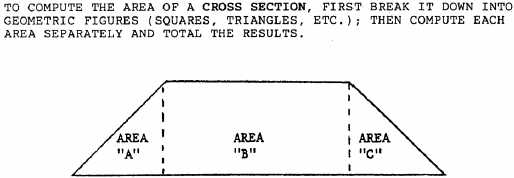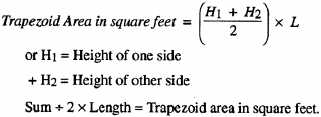Figure 4-8.-Geometric sections of a cross section.
Figure 4-9.-Area of a square and rectangle.
To
compute
the
area
of
across
section, you must first break it down into
geometric
figures
(squares,
triangles,
etc.). (See fig. 4-8.) Compute each area
separately,
then
total
the
results
to
obtain the total square feet. To compute
the square feet area of a SQUARE or
RECTANGLE (fig. 4.9), use the following
equation:
Area = Base × Height or (A = B × H).
(See
fig.
4-9.)
Since a RIGHT TRIANGLE is a square
or rectangle cut in half diagonally, the
same equation can be used to compute the
area and the result divided by 2 (fig. 4-
10). For example;
Another
geometric
figure
you
may
encounter
in
a
cross
section
is
a
TRAPEZOID (fig. 4-11). The equation to
compute the area of a trapezoid is as
follows:
The next step is to compute the total area
in the cross section (fig. 4-12). This is
accomplished by adding the results of each
geometric figure in the cross section. This value
is the total end area of the cross-sectional view.
To compute the amount of cubic yards between
two cross sections, use the following equation:
4-8








